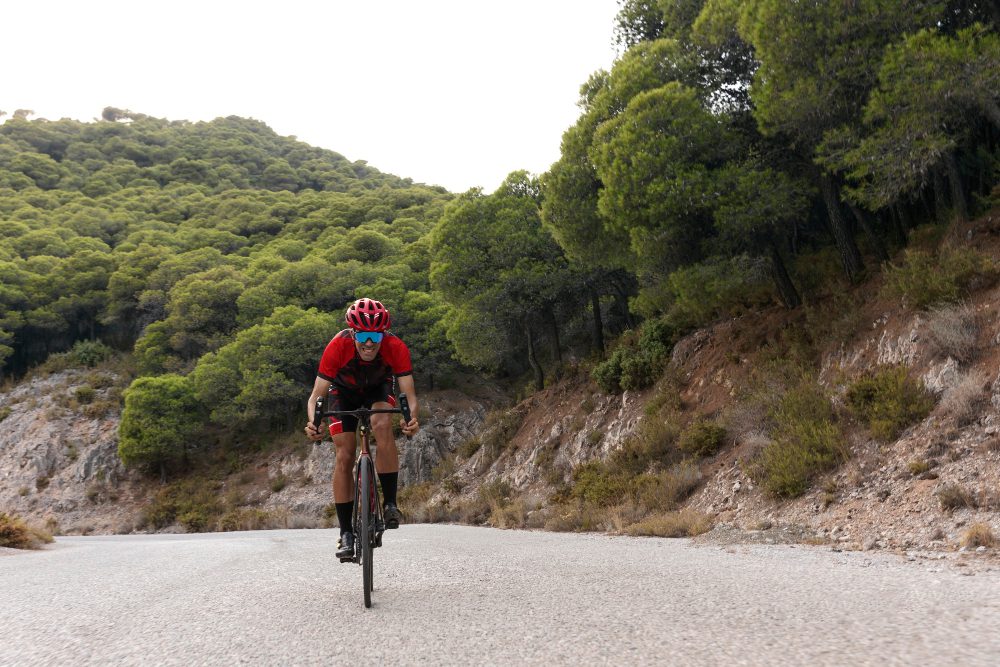What is considered a steep hill in cycling?
Cycling can be a challenging yet exhilarating sport, and one of the factors that adds to the excitement is encountering steep hills along the way. But what exactly qualifies as a steep hill in cycling? Well, it all comes down to the gradient or incline of the hill.
Gradient and its impact on cycling
The gradient of a hill refers to how steep or gradual it is. It is typically measured in a percentage that represents the rise in elevation over a certain distance. For example, if a hill has a gradient of 10%, it means that for every 100 meters you travel horizontally, you will climb 10 meters vertically.
Cyclists often categorize hills based on their gradient percentages, with various classifications used to describe different levels of difficulty. These classifications are subjective to some extent, but they provide a general guideline for cyclists to assess the challenge ahead.
Levels of steepness
“Steepness is relative. What might be considered a challenging hill for one cyclist could be a walk in the park for another.”
However, in general, the following gradient ranges are commonly used to describe the levels of steepness:
| Gradient Range | Description |
|---|---|
| 1% – 3% | Mild incline, often barely noticeable |
| 4% – 6% | Gentle slope, can be easily tackled by most cyclists |
| 7% – 9% | Moderate incline, requires some effort but still manageable |
| 10% – 15% | Significant ascent, experienced cyclists may find it challenging |
| Above 15% | Very steep, reserved for advanced riders and climbers |
Note: These ranges are not set in stone and can vary depending on individual fitness levels and cycling experience. Someone who regularly tackles hilly terrain may have a higher tolerance for steeper gradients.
Factors that influence the difficulty of a hill
While gradient is a key factor in determining the steepness of a hill, there are other factors that can also impact its difficulty:
- The length of the climb: A short but extremely steep hill can be more challenging than a longer but less steep incline.
- Road surface conditions: Poor road conditions, such as gravel or potholes, can make climbing a hill more difficult.
- Weather conditions: Strong headwinds or adverse weather conditions can add to the difficulty of a climb.
- Personal fitness level: Individual fitness and endurance play a significant role in tackling hills.
The thrill of conquering steep hills
Cycling up a steep hill can test the limits of a cyclist’s strength, determination, and skill. Climbing a challenging gradient requires mental focus, physical exertion, and strategic pacing. Yet, the reward of reaching the top and the adrenaline rush that comes with it can be immensely satisfying.
So, next time you encounter a hill during your cycling adventures, consider the gradient and the level of steepness it presents. Whether it’s a mild incline or a leg-burning ascent, remember that each hill provides an opportunity to push yourself, appreciate the beauty of your surroundings, and revel in the joy of conquering new heights.
Is a 20% hill steep?
When it comes to cycling, steep hills can be both challenging and intimidating. But what exactly constitutes a steep hill? One measurement often used to gauge the difficulty of a hill is its gradient or incline. A gradient is expressed as a percentage and indicates how much the road rises in relation to its horizontal distance.
A 20% hill is considered steep in cycling. This means that for every 100 meters of horizontal distance, the road ascends 20 meters in elevation. To put it into perspective, a 20% gradient is equivalent to a climb of 1 in 5, which means for every 5 meters you travel horizontally, you will ascend 1 meter vertically.
“Climbing a 20% hill requires a significant amount of strength, endurance, and skill. It is not for the faint-hearted.”
When faced with a 20% gradient, cyclists often need to shift into their lowest gears and adopt a steady and controlled pace to conquer the climb. The steepness of such hills demands a high level of physical fitness and mental determination.
It’s worth noting that a 20% gradient is considered challenging even for experienced cyclists. In fact, many professional races, such as the Tour de France, rarely feature gradients above 10-15%. However, there are cyclists who specialize in climbing and excel on steep climbs, using their lightweight and powerful pedaling to tackle even the steepest hills.
Factors influencing the perception of steepness:
The perception of steepness can also depend on various factors, including:
- The length of the hill: A shorter hill may feel steeper, while a longer one might be more manageable.
- Previous climbing experience: Cyclists who have trained on similar gradients may find a 20% hill more manageable compared to beginners.
- A rider’s physical condition: Fitness levels and strength can impact one’s ability to conquer steep hills.
In conclusion, a 20% hill is indeed considered steep in cycling. It presents a significant challenge for riders and requires physical fitness, mental determination, and the right gear selection to conquer. However, perception of steepness can vary depending on individual factors, making each cyclist’s experience unique.
Is a 10% hill steep?
When it comes to cycling, the gradient of a hill can greatly affect the difficulty of the climb. One frequently asked question is, “Is a 10% hill steep?” The answer, as with many things in cycling, is that it depends on various factors.
Gradient and Perception
Gradient is the measure of how steep a hill is, expressed as a percentage. A 10% gradient means that for every 100 meters you travel horizontally, you ascend 10 meters vertically. While this might not sound particularly challenging, perception can make a big difference.
Experience and Fitness Level
A cyclist’s experience and fitness level play a significant role in determining whether a 10% hill is considered steep. For a seasoned and fit cyclist, a 10% gradient may be manageable, but for a beginner or someone with lower fitness levels, it can be quite daunting.
Equipment and Gearing
Another factor to consider is the cyclist’s equipment and gearing. Having the appropriate gear ratios can make a significant difference in tackling steep hills. A well-equipped bike with a wide range of gears can help cyclists conquer even the steepest ascents with relative ease.
Comparing Hill Gradients
To put the steepness of a 10% hill into perspective, it can be helpful to compare it to other gradients. For example, a 5% gradient would be considered moderate, while a 15% gradient would be considered very steep. This comparison shows that a 10% gradient falls somewhere in between.
Quotes from Professional Cyclists
“A 10% gradient can be challenging, especially if it stretches over a long distance. It requires a steady effort and good pacing to conquer.” – Professional Cyclist
Is a 6% hill steep?
When it comes to cycling, the steepness of a hill is a crucial factor that determines the level of challenge and effort required. One commonly asked question is whether a 6% hill is considered steep. Let’s dive into this topic and find out.
Understanding gradients
Gradients, or the incline of a hill, are typically expressed as a percentage. This percentage represents the vertical rise in relation to the horizontal distance covered. A 6% gradient means that for every 100 meters you cycle horizontally, the elevation increases by 6 meters.
The perception of steepness
Perception of steepness varies from cyclist to cyclist, based on individual fitness levels, experience, and personal preference. For some seasoned riders, a 6% hill may be a manageable challenge, while for others, especially beginners or those less experienced with climbing, it might be considered quite steep.
Comparing gradients
To provide some context, let’s compare a 6% gradient to other common gradients:
A 4% gradient is often considered a mild climb, suitable for most cyclists.
A 6% gradient falls into the moderate to challenging category.
A 10% gradient is undeniably steep and will test even advanced riders.
Factors influencing difficulty
It’s essential to note that the perception of steepness not only depends on the gradient but also on other factors such as distance, road conditions, and how well-rested the cyclist is. A short 6% climb may be more manageable than a long ascent with the same gradient.
Personal goals and abilities
Ultimately, determining whether a 6% hill is steep or not is subjective. It depends on your personal fitness level, experience, and goals. As you gain more cycling experience and fitness, what was once considered steep may become more manageable.
Tackling steep hills
If you’re looking to improve your climbing ability, there are several strategies you can employ:
- Hill repeats: Practice climbing similar gradients repeatedly to build stamina and strength.
- Pacing: Find a rhythm and maintain a steady effort throughout the climb.
- Proper gearing: Ensure your bike is geared appropriately for the terrain.
- Mental preparation: Stay focused and positive, believing in your ability to conquer the climb.
In conclusion, a 6% hill can be considered moderately steep, and its difficulty will vary from cyclist to cyclist. Whether you see it as a challenge or an achievable goal, the important thing is to enjoy the ride and continue pushing your limits.
Conclusion
While a 10% hill may not be the steepest gradient out there, it is still considered steep by many cyclists, especially those with less experience or lower fitness levels. The perception of steepness can vary from person to person, but with proper training, equipment, and determination, any cyclist can overcome the challenges of climbing a 10% hill.



